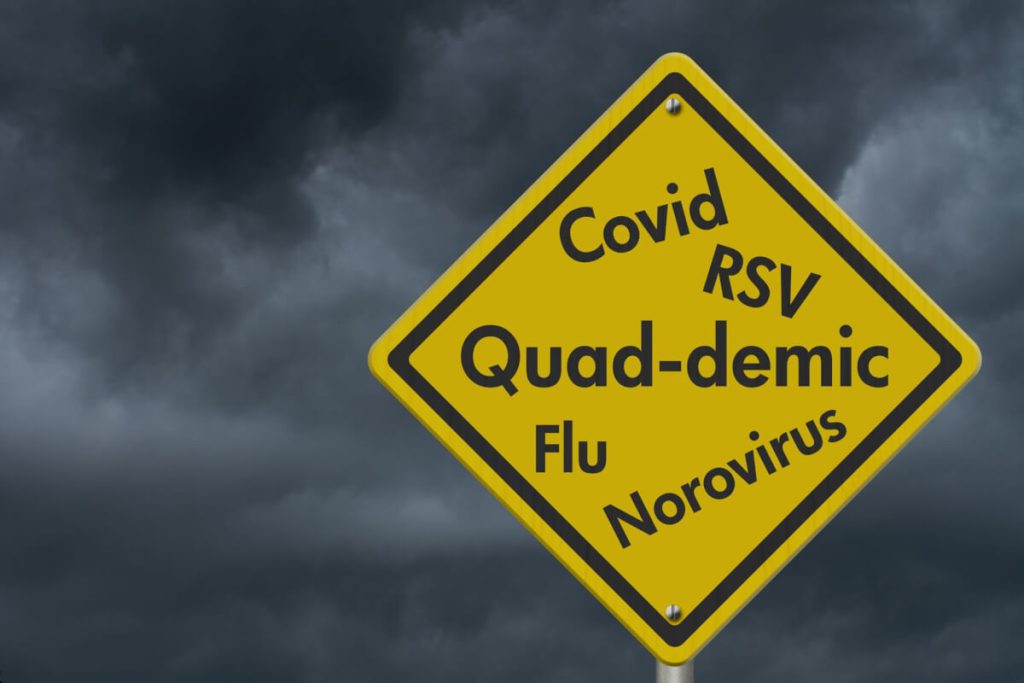

(Image by Karen Roach on Shutterstock)
“Quademic.” Even the word is ominous. After living through the ravages of the COVID-19 pandemic, will our collective blood pressures shoot up every time we hear “demic” at the end of a new, vaguely threatening label?
The gimmicky word quademic is being applied by some, mostly lay people, to the surges of flu, RSV, COVID-19, and norovirus infections across the nation. Or are the numbers high just because it’s winter?
The four viruses, three respiratory and norovirus, a gastrointestinal virus, are the top infections we see every winter. They can occur at any time of year, but they all peak in the winter.
There are a lot of cases right now, but they are not peaking at the same time. They are, however, clustering.
A U.S. Centers for Disease Control and Prevention (CDC) flu report for late January showed that about 30% of lab tests were positive for flu and the incidence still climbing. The number of cases is the highest it’s been since 2009. There have been 47 deaths to date this season.
The number of RSV cases peaked recently and is dropping. There has not been a COVID-19 peak as seen in previous winters, with 5.4% of tests positive in the CDC’s report. According to Dr. Thomas Russo, head of the infectious diseases department at the University at Buffalo School of Medicine, COVID-19 numbers are expected to peak in the next few weeks.
Norovirus has no reporting requirement but Russo said it’s been a big year for it.
The viruses share common symptoms, including fever, chills, cough, sore throat, runny nose, achiness, fatigue, headache, vomiting, and diarrhea. Tests are required to identify the particular infection. It’s unlikely that someone will have two or more viruses simultaneously, and certainly not all four. Preventing one virus, however, can help prevent all of them.
Vaccination is key to avoiding an infection and minimizing illness. Vaccines are not 100% effective, but even if you get the illness it won’t be as severe. You’ll be helping others by being less likely to spread the disease. Benefits far outweigh the risks of vaccines, which are very low, but not zero. Viruses can mutate and protection from previous immunizations wanes over time.
Norovirus causes inflammation of the stomach and intestines. It’s sometimes called the stomach flu. It’s highly contagious, thrives on surfaces and is resistant to most disinfectant sprays. Clean with diluted bleach and wash clothes in hot water to limit contamination. Kids often bring the virus home from daycare or school, where parents are low-hanging fruit for infection. Cruise ships and other places where people are in close quarters can lead to an outbreak.
Keep washing your hands!







